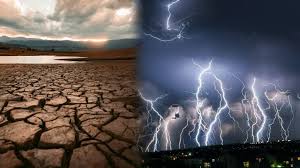El Niño threatens all sectors and canal transits

The El Niño phenomenon has arrived and there will be three climatic trends: decreased rainfall, increased maximum and minimum temperatures, and much more evaporation.
During the next few months, its effects will be mild but, between January and March of next year, the situation could be much more serious, when the phenomenon coincides with the summer months.
In Panama, a state of climate emergency has already been declared, calculating that the average duration of El Niño is between 9 and 18 months. The director of the Institute of Meteorology and Hydrology, Luz Graciela de Calzadilla, warned that this means that it could be extended until March of next year or for almost all of 2024.
The strongest effects will be felt in the dry season of 2024 and all sectors will be affected, mainly agriculture, energy and drinking water.
“We have indicated to the agricultural sector that they should store the rainwater for the coming months and produce food such as bales, to feed cattle,” she said.
On May 30, the Cabinet Council declared a state of environmental emergency throughout the national territory, in the face of prolonged drought as a consequence of the climate crisis that is affecting the world.
Idaan director Juan Antonio Ducruet said the average level of the Alajuela and Gatún lakes is 251 and 87 feet above sea level, respectively. However, he clarified that currently Alajuela is 208 feet above sea level and Gatun is 79.7 feet.
Alajuela, which supplies water to Panama City, has recovered with the help of the rains of recent weeks, but not Gatún.
To face the looming crisis, Ducruet said that they will strengthen underground water sources, that is, enable wells at the national level and make improvements to the country’s water intakes.
Ducruet warned that the Gatun level could become critical if it drops below 78.5 feet above sea level. Yesterday Saturday it was at 79.7 feet.
“The problem is that even if it looks like it’s raining right now, recovering the level of the lakes takes time [60 days], since it involves large water surfaces. That recovery could occur at the end of August,” said Ducruet, who calculates that there is a water production deficit of around 10%. Therefore, he recommended the rational use of water.
“These phenomena will return and, as a nation, we must improve our water capacity for the operation of the Canal and for human consumption,” he concluded.
The Canal
If the current weather conditions worsen and the levels of the lakes do not improve, the Canal contemplates the implementation of extreme measures that would include limiting the number of daily transits.
“Currently, we transit between 35 and 36 ships per day. It would have to go down to 32 and 28 transits per day,” warned the administrator of the Panama Canal Authority, Ricaurte Vásquez Morales.





